There’s something about the coyote-meets-road-runner desertscape of southern Utah that attracts outdoor adventurers. In fact, there’s so much to do that you could spend a lifetime exploring the slot canyons, buffed-out slickrock trails and sinuous rivers. Get ready to get dirty – we mean really dirty – with these top desert adventures.
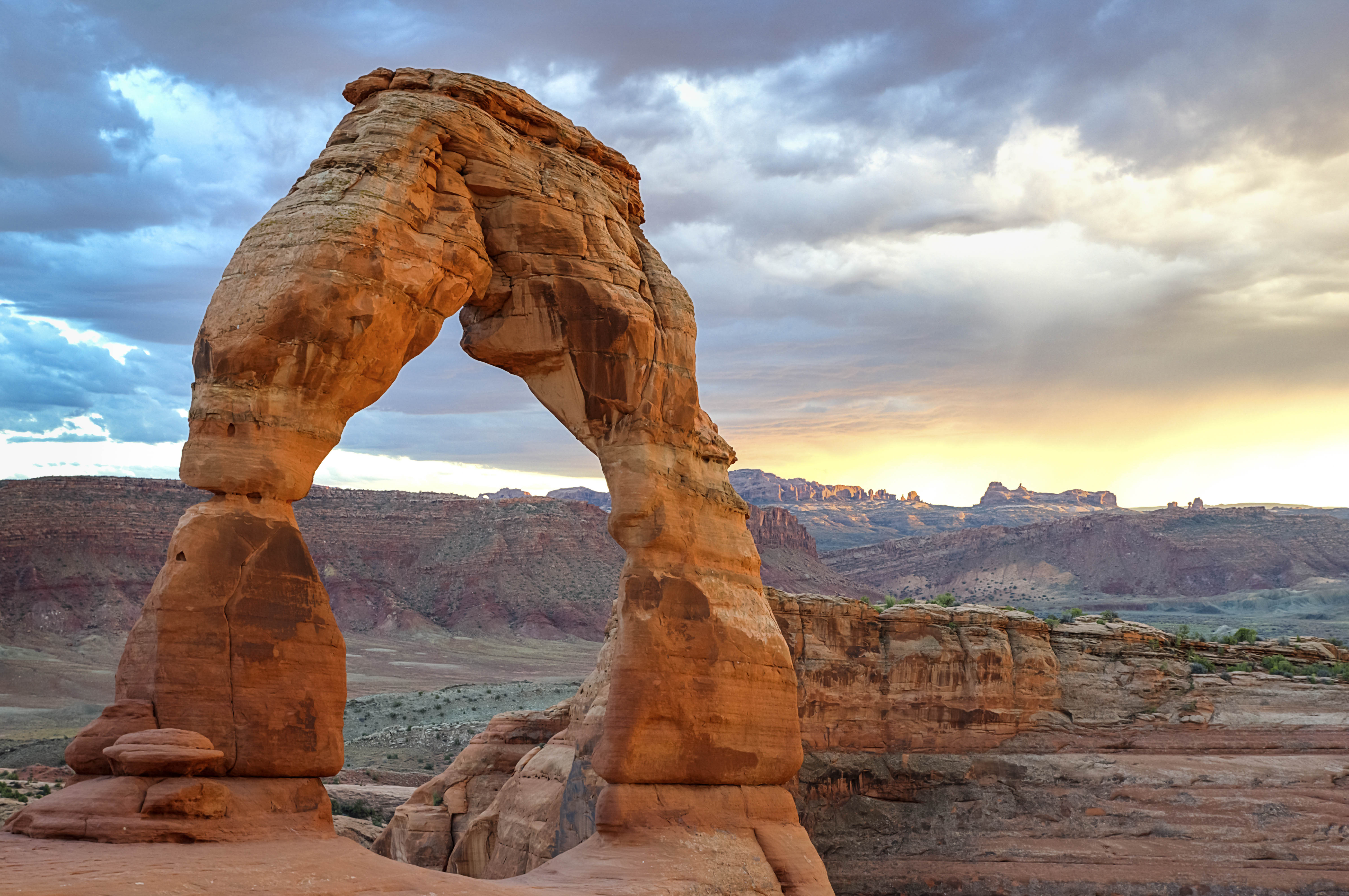
Mountain biking
While there’s plenty of evergreen-sided single-track up north, southern Utah is all about slickrock trails (so named for the trails' sandstone texture), sick descents down curvy banked routes, sand up to your eyeballs and never-ending sunny days. It all starts and ends in Moab. Just wander down Main St and marvel at the number of bike shops, and you’ll know you’ve found America’s biggest, baddest and gnarliest bike-mecca-apolis. Come in spring or fall to avoid the heat, and always bring double the water you think you’ll need.
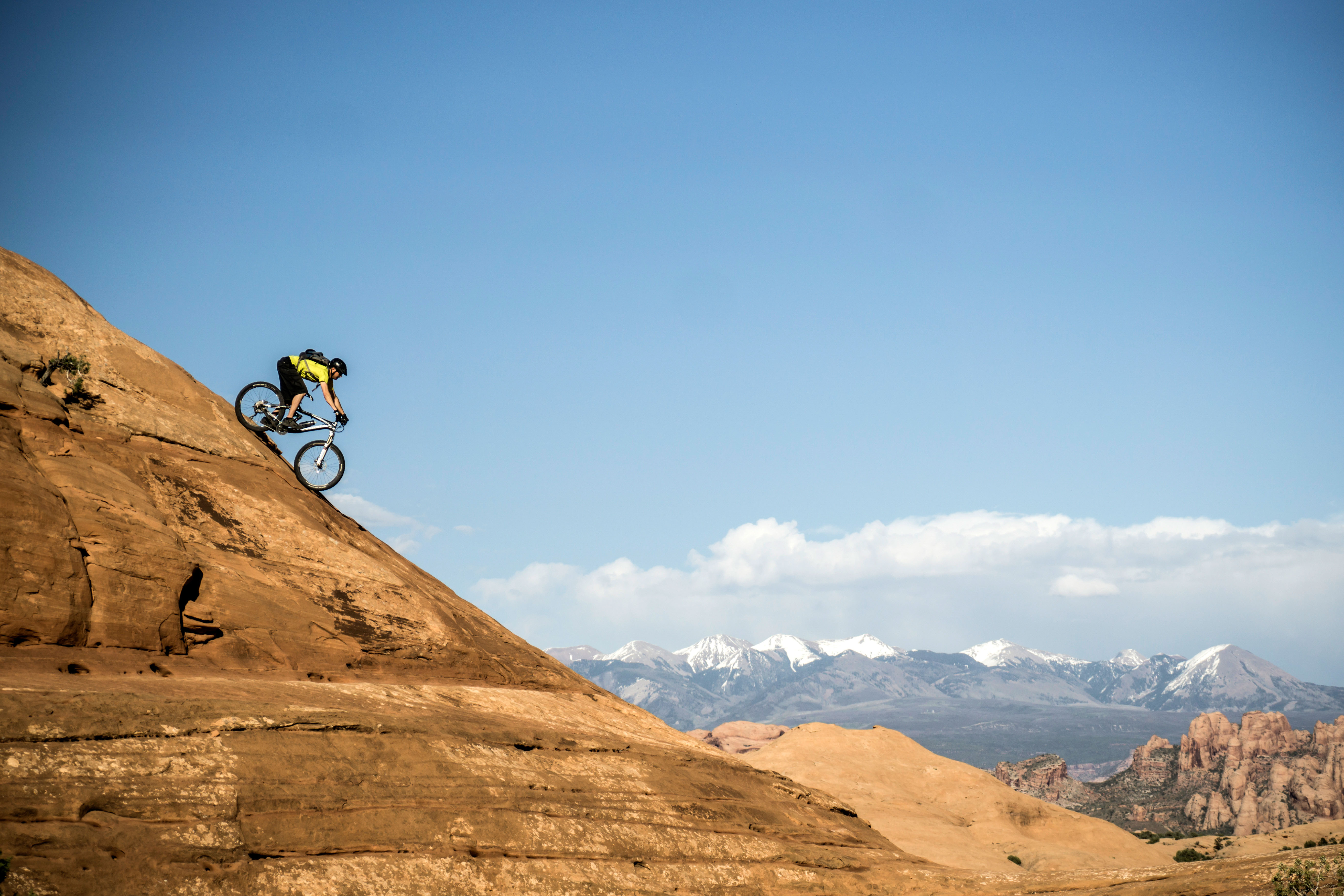
- You didn’t come all the way to Utah not to ride Slickrock (utah.com/mountain-biking/slickrock). It’s arguably one of the most famous mountain biking routes on the planet. The 10.6-mile loop takes you out and back across the Navajo sandstone plateau with remarkable views of the Colorado River down below.
-
White Rim Trail. Visit all Canyonlands National Park has to offer on this multi-day 100-miler. You’ll see a little of everything on a trail that’s even open to beginners. Make plans early; campsites fill up quick.
Boating
Whether by canoe, raft, dory, houseboat or kayak, the rivers and waterways of Utah will mesmerize you at every turn. And there’s no better way to get really deep into the backcountry than aboard a raft or canoe (after all, unlike backpacking, you can bring all the beer you want).
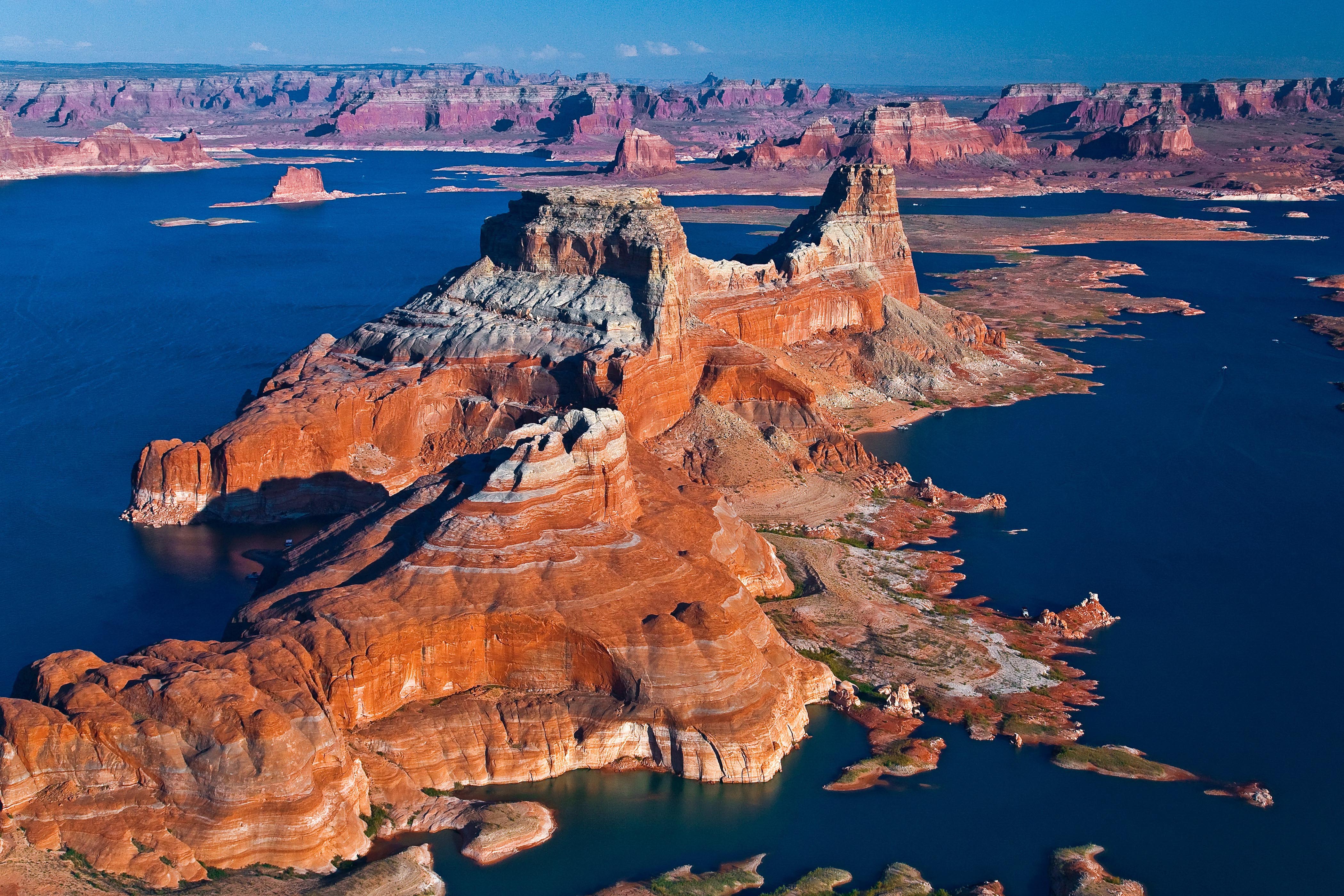
- Both the Colorado and Green Rivers wind through the heart of Canyonlands National Park. The upper sections of these are perfect for flat-water canoeing or kayaking. Drop down below the confluence of the two rivers into Cataract Canyon, and a jaw-clenching Class III section will get your heart pumping and your teeth chattering. Head up higher on the Green River to Desolation Canyon for Grand Canyon-like views, and, well, plenty of desolation.
-
Lake Powell. Imagine taking one of the most beautiful canyons on earth and flooding it. What you’d end up with is a glistening waterway trapped between towering sandstone spires, a veritable Waterworld without the big budgets and bad acting: Lake Powell. Perhaps Edward Abbey was right, we shouldn’t have flooded it, but spend a week on a houseboat partying with friends and motoring out to lost coves and you might throw away your copy of Desert Solitaire.
Canyoneering and hiking
You don’t need a boat or a bike or a motorhome to properly explore all the splendors of southern Utah. In fact, the best way to explore this delicate corner of earth is on your own two feet. There are multi-day backpacks and single-day hoofs to arches and overviews, natural bridges and serpentine slot canyons. If you’re here in summer, you’ll need a gallon of water per person, per day. Think about a spring or fall trip, or get up early to take advantage of cool sunrise weather.
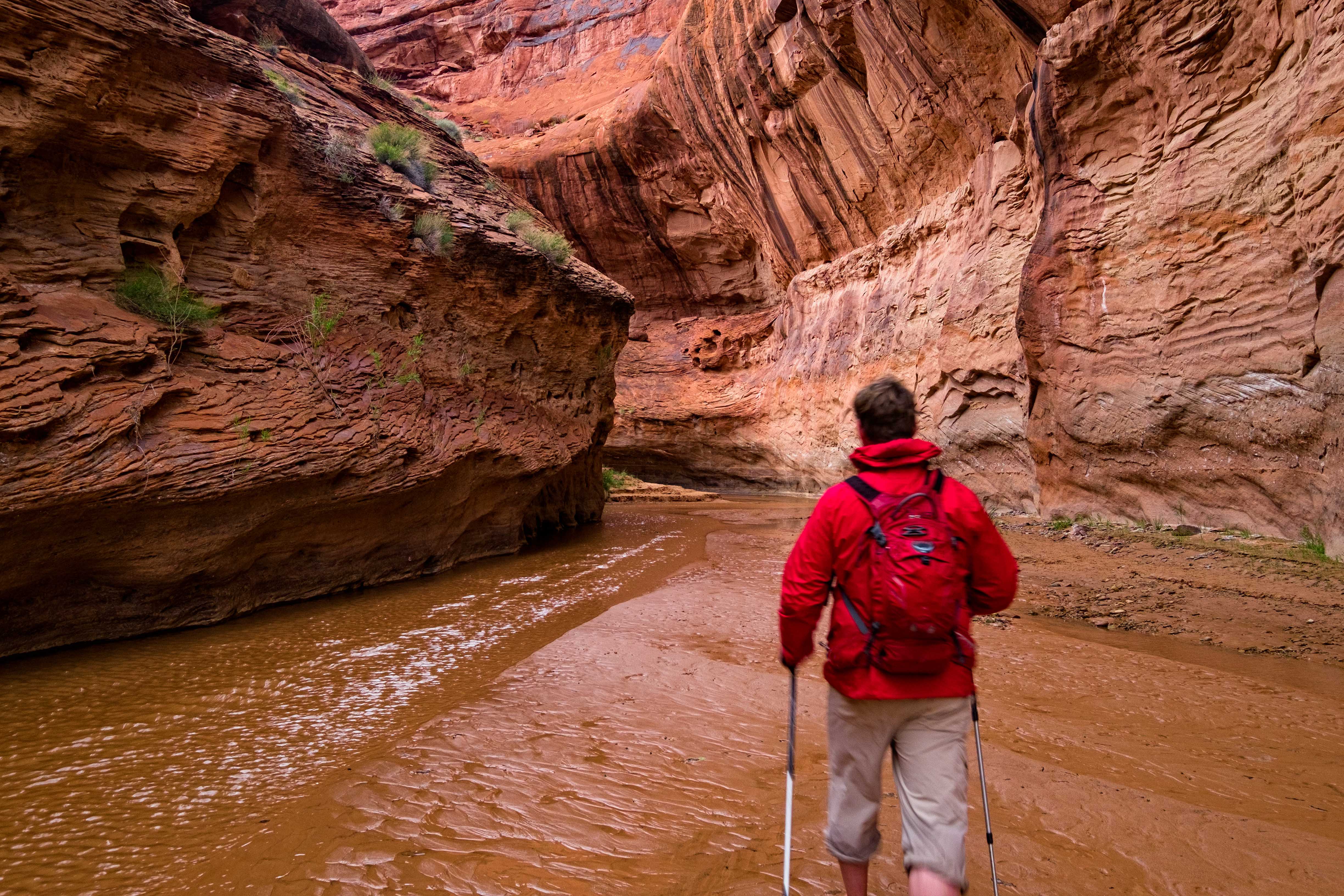
Arches National Park. You’ll likely join the line of out-of-towners to take a look at Delicate Arch (it’s smaller than you imagined) at some point during your Arches visit, but people in the know head to the Fiery Furnace for hours-upon-hours of getting lost and getting found again in a sandstone labyrinth. First timers should consider going on a ranger-led hike.
-
Bryce Canyon National Park. Head out for a day or strap on a pack for a multi-day tromp at this wickedly wild national park. A top pick for fit hikers is the Fairyland Loop, an eight-mile jaunt that takes you through the north of the park past toppling hoodoos and canyon rims.
-
Grand Staircase-Escalante National Monument. This park is nearly twice the size of Rhode Island, allowing for plenty of hiking and canyoneering adventures. The most iconic hikes take you into slot canyons so narrow you can touch the walls on either side. Don’t miss hikes like Dry Fork, Coyote Gulch and Upper and Lower Calf Creek, and be very wary of flash floods – especially in early fall.
Climbing
When the wind and elements hit the sandstone of Utah, they form a rich dark patina known as desert varnish. Oceans of empty walls of desert varnish ripple their way through this canyon country, and big-time wall climbers can spend several months exploring classic areas. Traditional climbers will need a huge gear rack (the famous Supercrack Buttress in Indian Creek takes at least six No 2 climbing cams), while sport-climbers should look to Potash Road and Big Bend for easier roadside climbing and bouldering.
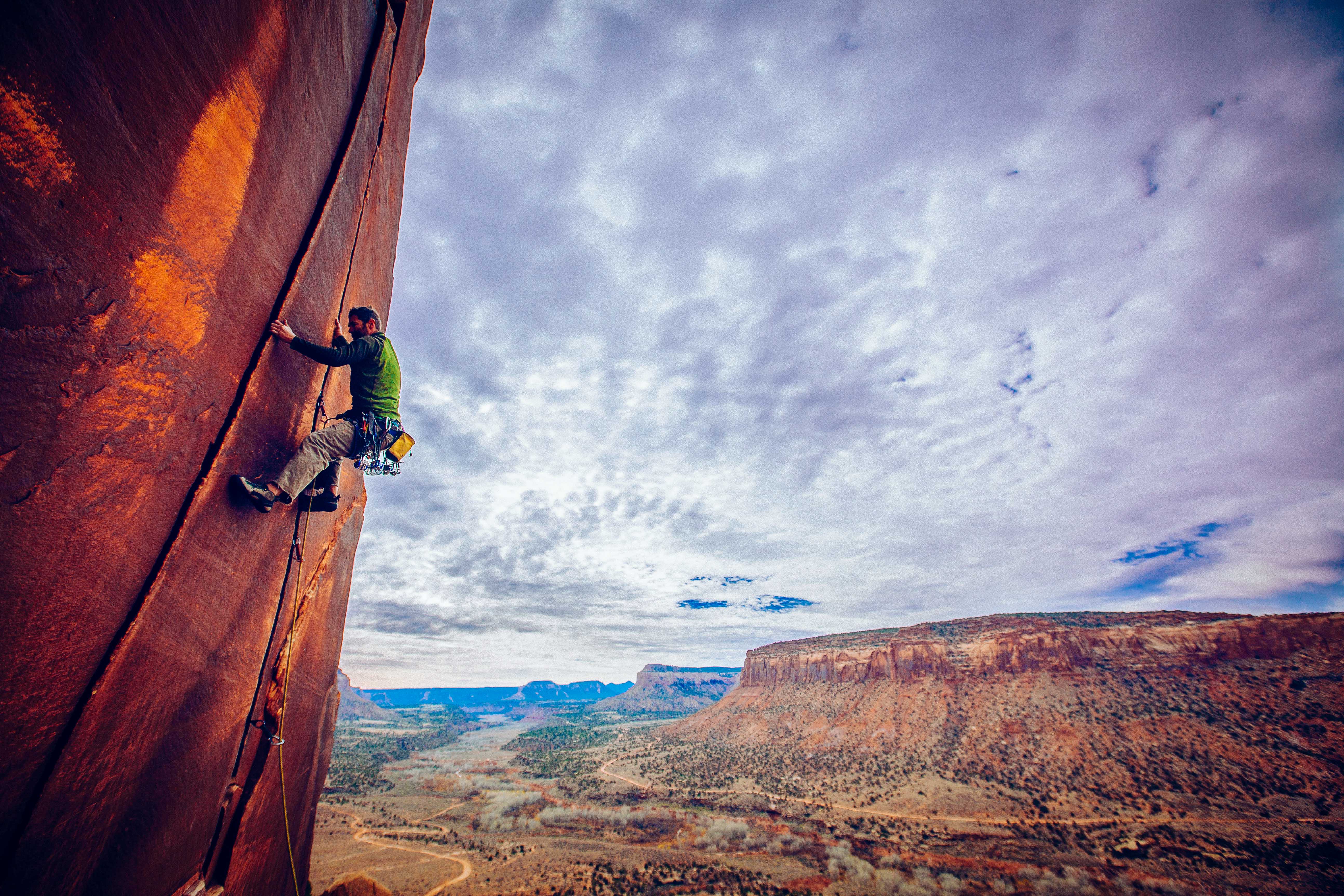
-
Zion National Park. For multi-day pin-ups on narrow desert cracks, check out the towering walls of Zion. On classics like the Moonlight Buttress, you can ease your way into big-wall climbing with short one- or two-day ascents, while further afield you’ll find some of the hardest aid-climbing America has to offer.
-
Indian Creek. Near the entrance to Canyonlands, Indian Creek is a crack-climbers paradise. On classic routes like Supercrack and Incredible Hand Crack, traditional climbers rip-and-claw their way up impossibly steep and virtuous sandstone walls.
-
Potash Road. Head just outside Moab to put up some silly-steep pocketed sport climbs at Potash Road (aka Wall Street). The hueco-ed sandstone climbs and easy access make this easy pickings for newbies (just watch for traffic).




